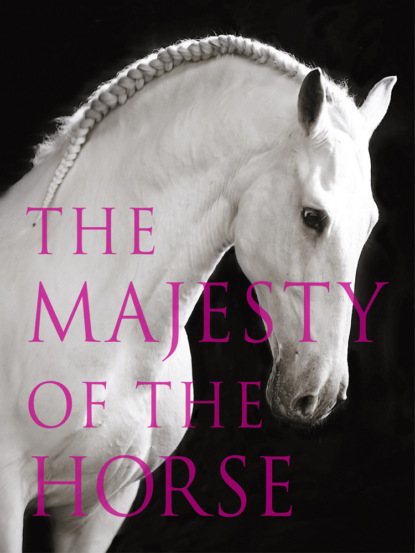По всем вопросам обращайтесь на: info@litportal.ru
(©) 2003-2024.
✖
The Majesty of the Horse: An Illustrated History
Настройки чтения
Размер шрифта
Высота строк
Поля
COLOR
Gray, bay, brown, black, or chestnut.
APTITUDE
Riding, dressage, classical dressage, endurance, cavalry
THERE ARE FEW HORSES AS ANCIENT, mysterious, and important as the North African Barb (also known as the Moroccan Barb), one of the foundation breeds for many of the modern light horse breeds. Because of the Barb’s very great antiquity, there is little documented history and a great deal of myth surrounding its origins, but what is clear is the enormous role it has played in the development of other breeds.
The Barb is said to have originated in North Africa in prehistoric times, but there were no indigenous horse breeds there, so its ancestors must have come from the east or traveled across prehistoric land bridges from the Iberian Peninsula. There is a widely debated connection to the Arabian horse, with some sources citing the Barb as the ancestor to the Arabian. Considering the dominant physical differences between these two breeds, differences with which they stamp their progeny, this seems unlikely. The two breeds’ most distinctive trait is their unique morphology: the Barb is typified by its ram-like profile, sloping croup, and low-set tail; the Arabian is almost the opposite and displays a concave profile, level croup, and high-set tail. What is more probable is that the Barb and the Arabian shared a similar prehistoric heritage and then developed their particular characteristics as a result of being bred differently in different geographic locations.
The Barb shares similarities with the postulated Horse Type 3, a prehistoric desert animal whose nearest modern equivalent would be the Akhal Teke. These desert horses that lived in Central Asia—the ancient Turkmenian, the now-extinct Tarpan, the Mongolian, and the Caspian, with its very Arabian characteristics—must have formed the early basis for the Barb in some combination. It can be conjectured that the ancient superhorse used by the Persians, the Nisean, might also have contributed to the Barb. The Nisean, which is thought to have been related to the ancient Turkmenian, often exhibited the classic ram-like profile seen in the Barb and the horses of the Iberian Peninsula. There is further speculation that the primitive Sorraia, which could have traveled from the Iberian Peninsula into North Africa, also contributed to the Barb, and the two breeds also share similarities in the shape of their heads.
Warring nomadic peoples like the Hykos and the Hittites traveled with their horses from Central Asia down into the Middle East in the sixteenth and seventeenth centuries B.C.E. Nomadic tribes spread across North Africa, and there was a great exchange of equine blood, particularly in Algeria, Morocco, and Libya. The Barb played a central role in these cultures and was widely used as a warhorse because of its incredible speed and endurance. The horses were particularly prized by the Numidians, semi-nomadic Berber tribes who occupied part of Algeria and Tunisia from around the second century B.C.E. The Numidian riders were famed for their great skills and were said to ride their horses with no restraints, using just a piece of string around the horses’ necks to guide them. The Carthaginians later used Numidian cavalry, mounted on Barbs, as mercenaries.
Вы ознакомились с фрагментом книги.
Приобретайте полный текст книги у нашего партнера:
Приобретайте полный текст книги у нашего партнера:





